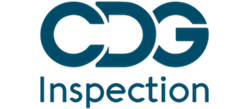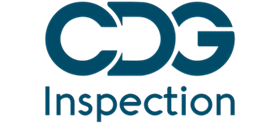Introduction:
In the pharmaceutical and biopharmaceutical industries, ensuring the safety and quality of products is of paramount importance. Cross-contamination, the transfer of contaminants between products, can have severe consequences on product efficacy and patient safety. Shared facilities, where multiple products are manufactured, present a heightened risk of cross-contamination. Current Good Manufacturing Practices (cGMP) are regulatory guidelines that provide a framework for ensuring the quality, safety, and efficacy of pharmaceutical products. cGMP audits play a crucial role in assessing and enforcing compliance with the control of cross-contamination in shared facilities.
The Significance of cGMP Audits:
cGMP audits are systematic and independent assessments conducted to verify compliance with established regulations and guidelines. These audits ensure that manufacturing processes, facilities, and quality systems are in alignment with cGMP requirements. For shared facilities, cGMP audits are instrumental in preventing cross-contamination by evaluating the design, implementation, and effectiveness of control measures in place.
Control of Cross-Contamination:
Cross-contamination can occur through various pathways, including equipment, personnel, airflows, and surfaces. Shared facilities inherently face higher risks due to the presence of multiple products, making the implementation of robust control measures essential. cGMP regulations provide clear directives on how to control cross-contamination, encompassing aspects such as facility design, equipment segregation, cleaning procedures, personnel training, and documentation.
Role of cGMP Audits in Cross-Contamination Control:
- Facility Design and Layout: Auditors assess whether the facility’s layout and design support effective separation of different manufacturing areas. Adequate physical barriers, unidirectional flow, and isolated HVAC systems help prevent airborne transfer of contaminants. An audit examines if the facility’s design aligns with cGMP recommendations to minimize the risk of cross-contamination.
- Equipment and Facility Segregation: cGMP audits scrutinize the segregation of equipment used for different products. Equipment should not be shared between products without thorough cleaning to prevent cross-contamination. Auditors evaluate the implementation of equipment cleaning protocols and validate their efficacy in eliminating residual contaminants.
- Cleaning and Sanitization Procedures: Effective cleaning procedures are a cornerstone in controlling cross-contamination. Auditors assess the adequacy of cleaning processes, including selection of cleaning agents, cleaning frequency, and validation of cleaning procedures. They verify that cleaning validation studies demonstrate the equipment’s cleanliness after manufacturing runs.
- Personnel Practices and Training: Human factors can contribute to cross-contamination. cGMP audits evaluate personnel training programs to ensure employees understand the risks of cross-contamination and follow proper hygiene and gowning procedures. Adequate training reduces the potential for personnel to inadvertently transfer contaminants.
- Documentation and Record Keeping: Accurate and comprehensive documentation is vital to demonstrate compliance and traceability. Auditors review batch records, cleaning records, and equipment usage logs to confirm that manufacturing processes were executed as planned and that cleaning procedures were followed diligently.
- Risk Assessment and Mitigation: Effective cross-contamination control involves conducting thorough risk assessments. Auditors examine whether the facility has identified potential sources of cross-contamination and implemented appropriate risk mitigation strategies. This includes evaluating the use of dedicated facilities or equipment for high-risk products.
- Change Control Procedures: Shared facilities often experience product changes. Auditors assess the change control procedures to ensure that the introduction of new products or processes is carefully evaluated for potential cross-contamination risks. This involves evaluating the impact of changes on existing control measures.
Key Elements of Effective cGMP Audits:
- Independence and Objectivity: Auditors should be independent from the areas being audited to ensure unbiased assessments. External audits or audits conducted by a separate quality unit within the organization are common approaches to maintaining objectivity.
- Comprehensive Audit Plans: The audit plan should be well-defined and cover all relevant aspects of cross-contamination control. This includes reviewing SOPs, personnel training records, equipment maintenance logs, cleaning validation reports, and facility design drawings.
- Risk-Based Approach: Audits should focus on high-risk areas and critical control points. This ensures that the most vulnerable aspects of cross-contamination control are thoroughly evaluated, and resources are allocated effectively.
- Documentation Review: Auditors meticulously review documentation to verify the implementation of control measures. Any discrepancies between documented procedures and actual practices can lead to non-compliance findings.
- Root Cause Analysis: In case of non-compliance findings, auditors delve into the root causes of the issues. This facilitates the identification of systemic problems and helps develop corrective and preventive actions (CAPAs) to address underlying deficiencies.
- Continuous Improvement: cGMP audits are not merely a regulatory requirement but also a tool for continuous improvement. Auditors should provide recommendations for enhancing cross-contamination control based on best practices and industry trends.
Conclusion:
Cross-contamination control is a critical component of ensuring product quality and patient safety in shared manufacturing facilities within the pharmaceutical and biopharmaceutical industries. cGMP audits serve as a robust mechanism for assessing compliance with control measures to prevent cross-contamination. By evaluating facility design, equipment segregation, cleaning procedures, personnel practices, and risk mitigation strategies, cGMP audits play a pivotal role in upholding the integrity of manufacturing processes and maintaining adherence to regulatory standards. Through a risk-based, comprehensive, and objective approach, cGMP audits contribute to the continuous improvement of cross-contamination control practices and, ultimately, the overall quality of pharmaceutical products.





